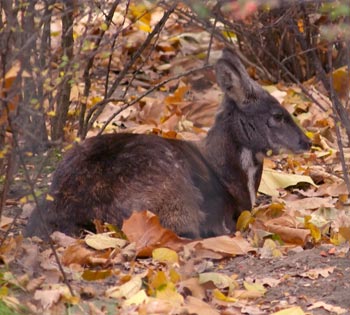Facts About Musk deer
Musk deer, despite their name, are not part of the true deer family, Cervidae. Instead, they belong to their own family, Moschidae, with the sole living genus being Moschus. These intriguing creatures differ significantly from typical deer. They lack antlers and facial glands but possess distinctive features such as a single pair of teats, a gallbladder, a caudal gland, tusk-like teeth, and a musk gland. The musk gland is particularly valuable due to its use in the production of perfumes.
Musk deer primarily inhabit forested and alpine scrub regions in the mountains of southern Asia, notably the Himalayas. They have a stocky build, with hind legs longer than their front legs, making them excellent climbers. Typically, they measure about 80-100 cm in length and weigh between 7-17 kg. Their feet are well-adapted to rugged terrain, and males showcase enlarged upper canines resembling tusks. As herbivores, they consume leaves, flowers, grasses, mosses, and lichens.
Male musk deer utilize their musk glands to attract mates and generally lead solitary lives. They mark their territories with their caudal glands and use their tusks to compete for females during the mating season. After a gestation period of 150-180 days, female musk deer give birth to a single fawn. Sadly, these animals have been heavily hunted for their musk glands, which are highly sought after in the perfume industry and rumored to have aphrodisiac properties.
From an evolutionary perspective, musk deer are the last surviving members of the Moschidae family, boasting a history spanning over 25 million years. Over time, their diversity has diminished, leaving Moschus as the sole genus that has persisted since the Pleistocene era. Notably, recent studies indicate that musk deer are more closely related to bovids (such as antelopes, goats, and cattle) than to true deer.
The Moschus genus encompasses seven species of musk deer, each adapted to distinct habitats in Asia. These include the Siberian musk deer, Anhui musk deer, dwarf musk deer, black musk deer, alpine musk deer, Kashmir musk deer, and white-bellied musk deer. Each species has evolved to fit its specific environment, making them unique in their own right.

 Vietnam
Vietnam